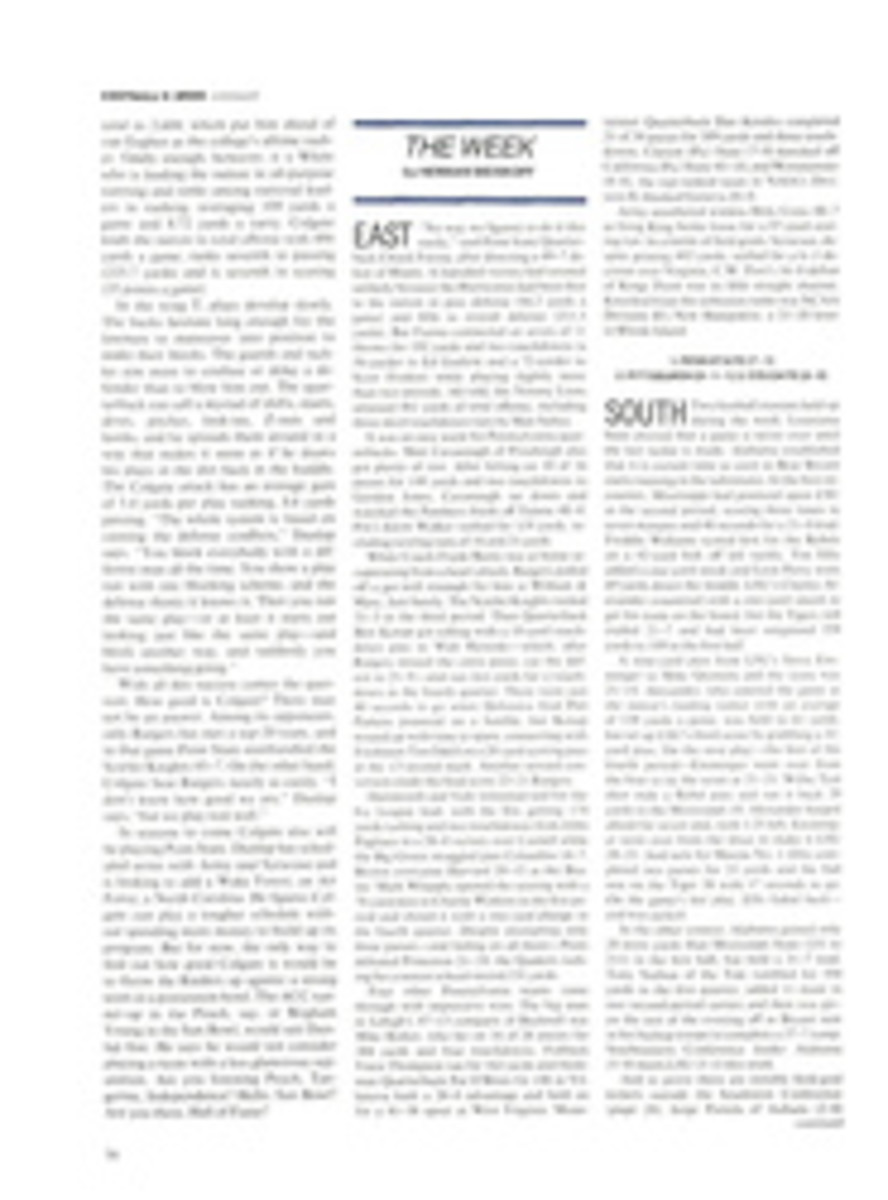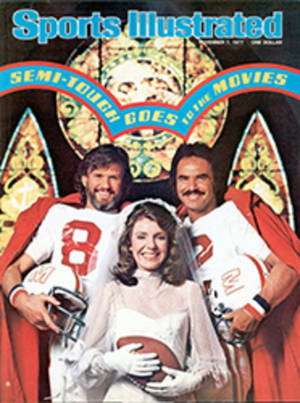
BIG SCORERS IN THE AD GAME
For every hour of sports on network television there are eight to 10 minutes of advertising; in 1976 that added up to more than 160 hours of commercials intermingled with kickoffs, pickoffs, tipoffs and teeoffs. During these moneymaking interludes the event's performers often appear, endorsing everything from American Express cards to weed trimmers. O. J. Simpson leaps over airport railings for Hertz as agilely as he eludes would-be tacklers for the Buffalo Bills. Pelé uses the same deft footwork for Pepsi that he employed in Cosmos games. Even Marvelous Marv Throneberry, the symbol of early Mets ineptness, is in the act, appearing in Miller Lite Beer commercials 14 years after his baseball career ended. In one of his one-line closers he says, "I still don't know why they want me to do this commercial."
The answer, Marv, is elementary. Sports programming, which long ago consumed weekend afternoons, now stretches into prime time. So advertisers, citing the proliferation of sports shows and studies that indicate the growing appeal of athletes as salesmen, are snatching up star jocks, both active and retired, to peddle their wares. Joe DiMaggio got $1 million for signing a three-year deal that changed his name from the Yankee Clipper to Mr. Coffee. For selling Magnavox television sets for two years, Henry Aaron has pocketed a million bucks. Olympic skater Dorothy Hamill spins for Bristol-Myers' Short & Sassy hair treatment, decathlete Bruce Jenner wolfs Wheaties, Tiger Pitcher Mark Fidrych sings a couple of bars for Aqua Velva and Joe Namath pops corn and cooks hamburgers for Hamilton-Beach and models pantyhose for Hanes. In 1975 Namath also agreed to lend his name to Fabergé for 10 years at $500,000 per.
Riding high on every advertising executive's list is Simpson. Advertising Age named the Juice the No. 1 presenter of 1977, citing his work for Hertz and TreeSweet orange juice. Simpson out-scored 20 other finalists, including Hamill and DiMaggio, by earning high grades in credibility, persuasiveness, sales effectiveness, image and merchandisability. In layman's terms, he put Hertz back in the driver's seat in the rental car business.
Actually Hertz had never taken a backseat in sales volume. But two years ago the company decided that it was image-less. Ted Bates Advertising Agency formulated a television campaign that stressed speedy service and adopted the Superstar-in-Rent A Car slogan. Then the search for a spokesman began.
"We used the subtract one, multiply by 20 technique to choose our celebrity," says Mark Morris, the campaign's director. "First, the idea has to stand on its own merit without any one celebrity. Then if we could've named 20 others who could've done as well as the star we used, our celebrity had failed." This time both the concept and the celebrity passed the test. Hertz' sales soared by 50%.
Simpson's race was never an issue. In fact, more and more black athletes appear in advertisements, which 10 years ago featured neither blacks nor athletes. Bill Russell's 20-foot hook shots on behalf of Ma Bell in 1974 went a long way to break down racial bias. According to Morris, Simpson's selection did not involve racial considerations. "With hindsight we could say what a terrific idea it was to use a black athlete," he says, "but in our minds O.J. was a superstar who stood for speed. Then—P.S.—he happened to be black. Actually Simpson is without color, which is not to say he is white but that he is beyond any ethnic identification in his projection."
In advertising, projection is everything. The key to acceptance by customers is how likable the public believes a product's spokesman to be. Market Researcher Alan J. Nelson has found that the more congenial an endorser appears, the more credible he will be as a salesman. Ability on the field is valuable to the athlete only in gaining the exposure necessary to attract an advertiser's attention. For example, of the 192 jocks evaluated by Nelson, Muhammad Ali ranked third in public awareness, but because many people neither trusted nor liked him he finished 190th in commercial appeal.
Ali does not appear in this season's biggest sports commercial, brought to you by Miller's Lite Beer. But 16 retired athletes do. In choosing its salesmen, Miller had to comply with an FCC regulation that forbids active athletes from endorsing alcoholic beverages. So former stars such as Yankee Manager Billy Martin, Celtic Coach Tommy Heinsohn and pro football's Deacon Jones and Paul Hornung received hefty checks.
The Miller gang has become so linked in the public's mind with Lite Beer that the members can no longer sit at a bar without some stranger sending over a round of the brew. And when Heinsohn flew into Ohio for a basketball clinic last summer, the man who picked him up at the airport whipped out a can of Lite Beer and chewed the top off with a few quick bites.
"Do you think I could try out for a Lite Beer commercial?" asked the sharp-toothed driver. Heinsohn gave him the number to call for an audition. His services were never used, but Miller borrowed his idea for one of its 30-second spots in which Bubba Smith opens a beer by ripping the top off the can.
Miller's use of jock commercials has helped to increase its annual sales by 43%. That is just the sort of number companies love to put in their annual reports, and it is no surprise, considering the dollars jock commercials have earned for Hertz, Miller and others, that Madison Avenue is fast becoming a sportsman's paradise.
PHOTO
THE JUICE HAS PUT HERTZ FIRMLY IN THE DRIVER'S SEAT

